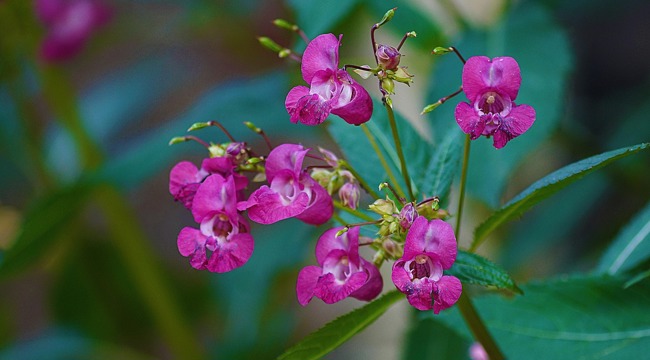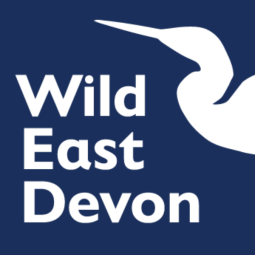Team Mark Invasive Species Week

Invasive Species Week celebrates the efforts of organisations working to reduce the impact of invasive non-native species while raising awareness of the threats they pose.
Invasive non-native species (plants and animals) threaten the survival of native wildlife and our natural ecosystems, each year they cost the economy nearly £2 billion, and can even pose risks to human health and the activities we enjoy.
The East Devon District Council Countryside team, along with our dedicated volunteers, works year-round to control and reduce invasive species across our nature reserves.
Here are some of the invasive species our team deal with:
Himalayan Balsam
Originally introduced from the Himalayas in 1839, this fast-growing plant spreads aggressively due to its explosive seed dispersal and high nectar production, which outcompetes native plants for pollinators. Himalayan balsam also accelerates riverbank erosion, dying back in winter and leaving banks vulnerable to flooding. ‘Balsam bashing’ (removing or cutting plants before they seed) is an effective control method. Thankfully, the work the team and volunteers do each summer has prevented Himalayan Balsam from overrunning any of our reserves.
Rhododendron
Though commonly seen across the UK, rhododendrons are not native and were first introduced in the 1700s as ornamental plants. Rhododendron cause extensive damage, they form dense thickets that shade out native plants, their roots and leaf litter release toxins harmful to other vegetation, and they can harbour Phytophthora, a devastating fungal-like pathogen affecting trees and plants. Rhododendron are a particular problem at our heathland sites, especially at Trinity Hill, but we have been working hard to gradually remove it and continue to do so! If left uncontrolled will dominate the habitat to the virtual exclusion of other plant life.
Water fern
Also known as 'fairy fern', water fern forms dense floating mats that can make water surfaces appear solid, posing a risk to wildlife and people. This fast-spreading species can double in size within days, blocking sunlight, reducing oxygen levels, and leading to fish dying. Fortunately, the water fern weevil has been successfully introduced as a natural control method.
Asian hornet
Also known as the yellow-legged hornet or Asian predatory wasp, this invasive species is native to Southeast Asia but has spread rapidly across Europe. It preys on honeybees and other pollinators, posing a significant threat to ecosystems and agriculture. This non-native species is easily mixed up with the European hornet, which plays an important role in ecosystems by preying on pest insects.
These are just a few of the non-native species the team are working hard to reduce. You can protect native ecosystems and help stop the spread of invasive species by:
- Report sightings via apps like iRecord or to organisations like the Non-Native Species Secretariat (NNSS).
- Check, clean, and dry outdoor gear, boats, and clothing after visiting affected areas.
- Remove responsibly—avoid spreading plant fragments or seeds.
- Encourage native species by planting and supporting native wildlife habitats.
